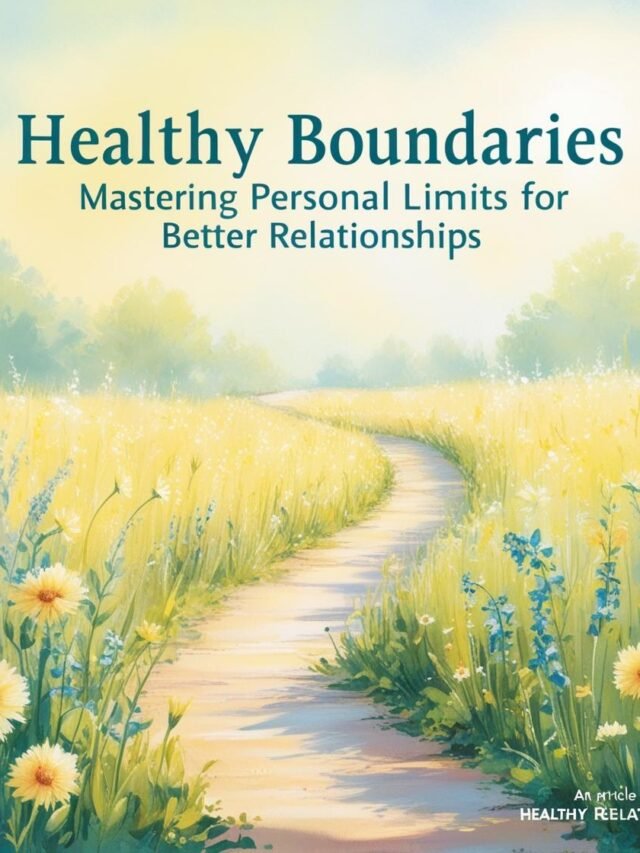Trust is one of the most essential ingredients of a healthy and happy relationship. Trust means that you can rely on your partner, that you feel safe and secure with them, and that you share a deep and meaningful connection. Trust also means that you respect your partner, that you support their goals and dreams, and that you honor their boundaries and preferences.

However, trust is not something that you can take for granted. Trust is something that you need to cultivate and nurture over time. Trust can be easily broken by lies, betrayal, or neglect, and it can be hard to rebuild once it is damaged. Trust can also be challenged by external factors, such as stress, distance, or change, and it can be affected by internal factors, such as insecurities, fears, or doubts.
That is why trust exercises can be very helpful for couples who want to build and strengthen their trust in each other. Trust exercises are activities that require mutual trust, communication, and cooperation between partners. Trust exercises can help couples increase their intimacy, reduce their conflict, enhance their understanding, and improve their teamwork. Trust exercises can also help couples have fun, relax, and enjoy each other’s company.
There are different types of trust exercises for couples, depending on the level of trust and the area of trust that they want to work on. Some trust exercises are physical, some are verbal, some are emotional, and some are creative. In this article, we will explore each type of trust exercise and give you some examples that you can try with your partner.
What are trust exercises and how do they work?
Trust exercises are activities that require mutual trust, communication, and cooperation between partners. Trust exercises can help couples build and strengthen their trust in each other by creating situations that challenge their trust and test their trustworthiness.

The benefits of trust exercises for couples are:
- They can increase intimacy by creating a sense of closeness, bonding, and affection.
- They can reduce conflict by improving communication, understanding, and problem-solving skills.
- They can enhance understanding by fostering empathy, compassion, and perspective-taking.
- They can improve teamwork by developing coordination, collaboration, and leadership skills.
The types of trust exercises for couples are:
- Physical trust exercises: These are trust exercises that involve touch, movement, and body language. They can help couples build trust through physical contact, sensory stimulation, and non-verbal communication.
- Verbal trust exercises: These are trust exercises that involve words, listening, and communication. They can help couples build trust through verbal expression, active listening, and honest feedback.
- Emotional trust exercises: These are trust exercises that involve feelings, emotions, and vulnerability. They can help couples build trust through emotional disclosure, emotional support, and emotional regulation.
- Creative trust exercises: These are trust exercises that involve imagination, creativity, and fun. They can help couples build trust through creative expression, playful interaction, and adventurous exploration.
Physical trust exercises for couples
Physical trust exercises are trust exercises that involve touch, movement, and body language. They can help couples build trust through physical contact, sensory stimulation, and non-verbal communication. Physical trust exercises can also help couples improve their physical intimacy, sexual compatibility, and health and wellness.

Some examples of physical trust exercises for couples are:
- The blindfold game: This is a trust exercise that involves one partner being blindfolded and the other partner guiding them through an obstacle course or a simple task. The blindfolded partner has to trust the other partner’s instructions and follow them carefully. The guiding partner has to communicate clearly and gently and avoid misleading or confusing the blindfolded partner. This trust exercise can help couples improve their communication, coordination, and trust.
- The trust fall: This is a trust exercise that involves one partner standing behind the other partner and catching them as they fall backwards. The falling partner has to trust the other partner’s ability and willingness to catch them and let go of their fear and hesitation. The catching partner has to be attentive and supportive and prevent the falling partner from hitting the ground. This trust exercise can help couples increase their trust, confidence, and security.
- The trust walk: This is a trust exercise that involves one partner leading the other partner by the hand or by the shoulder through a walk. The leading partner has to choose a safe and interesting route and point out things along the way. The following partner has to trust the other partner’s direction and enjoy the journey. This trust exercise can help couples enhance their trust, curiosity, and appreciation.
- The trust lean: This is a trust exercise that involves one partner leaning against the other partner and the other partner supporting them. The leaning partner has to trust the other partner’s strength and stability and relax their body and mind. The supporting partner has to be strong and steady and comfort the leaning partner. This trust exercise can help couples strengthen their trust, intimacy, and affection.
Some tips for physical trust exercises are:
- Make sure that both partners are comfortable and consent to the trust exercise. If one partner feels uncomfortable or unsafe, they can stop the trust exercise at any time.
- Make sure that the trust exercise is safe and appropriate for the physical condition and ability of both partners. If one partner has any injury, illness, or disability, they should consult their doctor before doing the trust exercise.
- Make sure that the trust exercise is done in a private and quiet place, where there are no distractions or interruptions. If the trust exercise is done outdoors, make sure that the weather is suitable and that there are no hazards or dangers.
- Make sure that the trust exercise is done for a reasonable amount of time, depending on the difficulty and intensity of the trust exercise. If one partner feels tired, bored, or frustrated, they can end the trust exercise and switch roles or try another trust exercise.
Verbal trust exercises for couples
Verbal trust exercises are trust exercises that involve words, listening, and communication. They can help couples build trust through verbal expression, active listening, and honest feedback. Verbal trust exercises can also help couples improve their verbal intimacy, communication skills, and emotional intelligence.

Some examples of verbal trust exercises for couples are:
- The honesty challenge: This is a trust exercise that involves both partners being honest and transparent with each other about anything and everything. Both partners have to ask and answer any question that comes to their mind, no matter how personal, sensitive, or uncomfortable it is. Both partners have to answer truthfully and respectfully, without lying, hiding, or judging. This trust exercise can help couples increase their trust, openness, and understanding.
- The compliment game: This is a trust exercise that involves both partners giving and receiving compliments to each other. Both partners have to take turns saying something positive and genuine about the other partner, such as their appearance, personality, skills, or achievements. Both partners have to accept and appreciate the compliments, without dismissing, denying, or deflecting them. This trust exercise can help couples enhance their trust, confidence, and appreciation.
- The question game: This is a trust exercise that involves both partners asking and answering questions to each other. Both partners have to take turns asking any question that they are curious or interested about the other partner, such as their preferences, opinions, experiences, or dreams. Both partners have to answer honestly and elaborately, without avoiding, evading, or shortening them. This trust exercise can help couples improve their trust, curiosity, and knowledge.
- The story game: This is a trust exercise that involves both partners telling and listening to stories to each other. Both partners have to take turns telling a story that they have experienced, witnessed, or imagined, such as a funny, scary, or romantic story. Both partners have to listen attentively and empathetically, without interrupting, criticizing, or mocking them. This trust exercise can help couples strengthen their trust, creativity, and empathy.
Some tips for verbal trust exercises are:
- Make sure that both partners are comfortable and consent to the trust exercise. If one partner feels uncomfortable or offended, they can stop the trust exercise at any time.
- Make sure that the trust exercise is respectful and appropriate for the relationship and the situation. If one partner has any secrets, traumas, or triggers, they should not be forced or pressured to share them.
- Make sure that the trust exercise is done in a private and quiet place, where there are no distractions or interruptions. If the trust exercise is done over the phone or online, make sure that the connection is clear and secure.
- Make sure that the trust exercise is done for a reasonable amount of time, depending on the interest and engagement of both partners. If one partner feels bored, tired, or overwhelmed, they can end the trust exercise and switch roles or try another trust exercise.
Emotional trust exercises for couples
Emotional trust exercises are trust exercises that involve feelings, emotions, and vulnerability. They can help couples build trust through emotional disclosure, emotional support, and emotional regulation. Emotional trust exercises can also help couples improve their emotional intimacy, emotional awareness, and emotional resilience.

Some examples of emotional trust exercises for couples are:
- The eye contact exercise: This is a trust exercise that involves both partners maintaining eye contact with each other for a certain amount of time. Both partners have to look into each other’s eyes and try to read each other’s emotions and thoughts. Both partners have to be open and expressive, without hiding, avoiding, or faking their emotions. This trust exercise can help couples increase their trust, intimacy, and connection.
- The emotion game: This is a trust exercise that involves both partners naming and sharing their emotions with each other. Both partners have to take turns saying how they feel and why they feel that way, using the formula “I feel (emotion) because (reason)”. Both partners have to listen and validate each other’s emotions, without judging, dismissing, or minimizing them. This trust exercise can help couples enhance their trust, awareness, and understanding.
- The gratitude game: This is a trust exercise that involves both partners expressing and receiving gratitude to each other. Both partners have to take turns saying what they are grateful for about the other partner, such as their qualities, actions, or gestures. Both partners have to acknowledge and appreciate each other’s gratitude, without rejecting, ignoring, or forgetting them. This trust exercise can help couples improve their trust, appreciation, and happiness.
- The love letter game: This is a trust exercise that involves both partners writing and reading love letters to each other. Both partners have to write a love letter that expresses their feelings, thoughts, and wishes for the other partner, using their own words and style. Both partners have to read each other’s love letters and respond with their own feelings, thoughts, and wishes. This trust exercise can help couples strengthen their trust, expression, and love.
Some tips for emotional trust exercises are:
- Make sure that both partners are comfortable and consent to the trust exercise. If one partner feels uncomfortable or vulnerable, they can stop the trust exercise at any time.
- Make sure that the trust exercise is respectful and appropriate for the emotional state and the emotional needs of both partners. If one partner has any emotional issues, challenges, or difficulties, they should not be forced or pressured to share them.
- Make sure that the trust exercise is done in a private and quiet place, where there are no distractions or interruptions. If the trust exercise is done over the phone or online, make sure that the tone, voice, and facial expressions are clear and consistent.
- Make sure that the trust exercise is done for a reasonable amount of time, depending on the emotional level and the emotional capacity of both partners. If one partner feels overwhelmed, exhausted, or drained, they can end the trust exercise and switch roles or try another trust exercise.
Creative trust exercises for couples
Creative trust exercises are trust exercises that involve imagination, creativity, and fun. They can help couples build trust through creative expression, playful interaction, and adventurous exploration. Creative trust exercises can also help couples improve their creative intimacy, creative skills, and creative enjoyment.

Some examples of creative trust exercises for couples are:
- The drawing game: This is a trust exercise that involves both partners drawing something for each other. Both partners have to take turns drawing something that represents the other partner, such as their face, their hobby, or their personality. Both partners have to show and explain their drawings to each other and appreciate each other’s creativity. This trust exercise can help couples increase their trust, expression, and appreciation.
- The role play game: This is a trust exercise that involves both partners acting out a scenario or a character for each other. Both partners have to take turns choosing a scenario or a character that they want to act out, such as a movie scene, a fantasy role, or a historical figure. Both partners have to act out their scenario or character and interact with each other and have fun. This trust exercise can help couples enhance their trust, spontaneity, and playfulness.
- The bucket list game: This is a trust exercise that involves both partners making and sharing their bucket lists with each other. Both partners have to make a list of things that they want to do, see, or experience in their lifetime, such as traveling, learning, or achieving. Both partners have to share and discuss their bucket lists with each other and support each other’s dreams. This trust exercise can help couples improve their trust, curiosity, and adventure.
- The surprise game: This is a trust exercise that involves both partners surprising each other with something unexpected and delightful. Both partners have to take turns planning and executing a surprise for the other partner, such as a gift, a date, or a gesture. Both partners have to receive and enjoy the surprise and express their gratitude. This trust exercise can help couples strengthen their trust, surprise, and happiness.
Some tips for creative trust exercises are:
- Make sure that both partners are comfortable and consent to the trust exercise. If one partner feels uncomfortable or embarrassed, they can stop the trust exercise at any time.
- Make sure that the trust exercise is respectful and appropriate for the preferences and the tastes of both partners. If one partner has any dislikes, fears, or allergies, they should not be exposed or subjected to them.
- Make sure that the trust exercise is done in a private and suitable place, where there are no distractions or interruptions. If the trust exercise is done in a public or unfamiliar place, make sure that the place is safe and comfortable.
- Make sure that the trust exercise is done for a reasonable amount of time, depending on the creativity and the fun of both partners. If one partner feels bored, tired, or stressed, they can end the trust exercise and switch roles or try another trust exercise.








